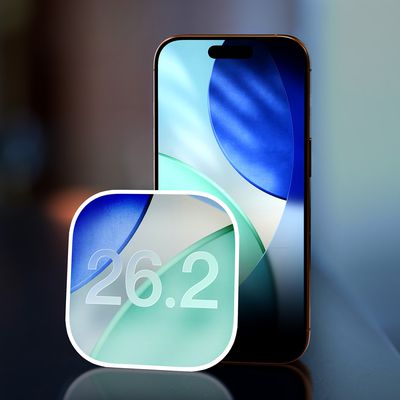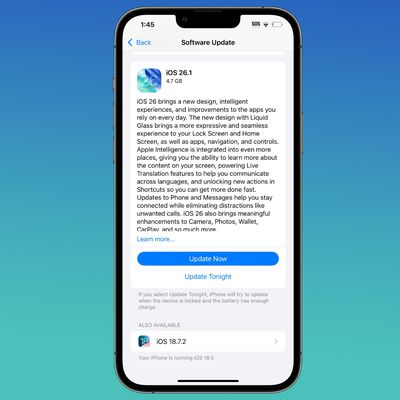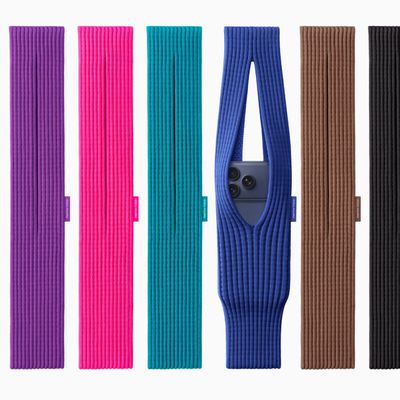Apple Announces ARKit 4 with Location Anchors, Depth API, and Improved Face Tracking
Apple today announced ARKit 4 alongside iOS 14 and iPadOS 14. The new version of ARKit introduces Location Anchors, a new Depth API, and improved face tracking.

Location Anchors allow developers to place AR experiences, such as life‑size art installations or navigational directions, at a fixed destination. Location Anchoring leverages the higher-resolution data in Apple Maps to place AR experiences at a particular point in the world, meaning AR experiences may now be placed at specific locations, such as throughout cities or alongside famous landmarks. Users can move around virtual objects and observe them from different perspectives, exactly as real objects are seen through a camera lens.
ARKit 4 also takes advantage of iPad Pro's LiDAR Scanner with a brand-new Depth API with advanced scene understanding capabilities, creating a new way to access detailed per-pixel depth information. When combined with 3D mesh data, this depth information makes virtual object occlusion more realistic by enabling instant placement of virtual objects within their physical surroundings. This can offer new capabilities for developers, such as taking more precise measurements and applying effects to the environment.
Finally, face tracking is expanded in ARKit 4 to support the front-facing camera on all devices with the A12 Bionic chip or newer. Up to three faces may now be tracked at once using the TrueDepth camera to power front-facing camera experiences like Memoji and Snapchat.
Popular Stories
We're getting closer to the launch of the final major iOS update of the year, with Apple set to release iOS 26.2 in December. We've had three betas so far and are expecting a fourth beta or a release candidate this week, so a launch could follow as soon as next week.
Past Launch Dates
Apple's past iOS x.2 updates from the last few years have all happened right around the middle of the...
Apple AI chief John Giannandrea is stepping down from his position and retiring in spring 2026, Apple announced today.
Giannandrea will serve as an advisor between now and 2026, with former Microsoft AI researcher Amar Subramanya set to take over as vice president of AI. Subramanya will report to Apple engineering chief Craig Federighi, and will lead Apple Foundation Models, ML research, and ...
Apple is expected to launch a new foldable iPhone next year, based on multiple rumors and credible sources. The long-awaited device has been rumored for years now, but signs increasingly suggest that 2026 could indeed be the year that Apple releases its first foldable device.
Subscribe to the MacRumors YouTube channel for more videos.
Below, we've collated an updated set of key details that ...
Netflix has quietly removed the ability to cast content from its mobile apps to most modern TVs and streaming devices, including newer Chromecast models and the Google TV Streamer.
The change was first spotted by users on Reddit and confirmed in an updated Netflix support page (via Android Authority), which now states that the streaming service no longer supports casting from mobile devices...
Cyber Week is here, and you can find popular Apple products like AirPods, iPad, Apple Watch, and more at all-time low prices. In this article, the majority of the discounts will be found on Amazon.
Note: MacRumors is an affiliate partner with some of these vendors. When you click a link and make a purchase, we may receive a small payment, which helps us keep the site running.
Specifically,...
2026 could be a bumper year for Apple's Mac lineup, with the company expected to announce as many as four separate MacBook launches. Rumors suggest Apple will court both ends of the consumer spectrum, with more affordable options for students and feature-rich premium lines for users that seek the highest specifications from a laptop.
Below is a breakdown of what we're expecting over the next ...
The updated specs of the M5 iPad Pro may point toward a major new feature for Apple's next-generation Studio Display expected in early 2026.
Apple's latest iPad Pro debuted last month and contains one display-related change that stands out: it can now drive external monitors at up to 120Hz with Adaptive Sync. The feature should deliver lower latency, smoother motion, and fewer visual...
Apple is encouraging iPhone users who are still running iOS 18 to upgrade to iOS 26 by making the iOS 26 software upgrade option more prominent.
Since iOS 26 launched in September, it has been displayed as an optional upgrade at the bottom of the Software Update interface in the Settings app. iOS 18 has been the default operating system option, and users running iOS 18 have seen iOS 18...
Apple recently teamed up with Japanese fashion brand ISSEY MIYAKE to create the iPhone Pocket, a limited-edition knitted accessory designed to carry an iPhone. However, it is now completely sold out in all countries where it was released.
iPhone Pocket became available to order on Apple's online store starting Friday, November 14, in the United States, France, China, Italy, Japan, Singapore, ...
Apple's iPhone 17 lineup is selling well enough that Apple is on track to ship more than 247.4 million total iPhones in 2025, according to a new report from IDC.
Total 2025 shipments are forecast to grow 6.1 percent year over year due to iPhone 17 demand and increased sales in China, a major market for Apple.
Overall worldwide smartphone shipments across Android and iOS are forecast to...


























